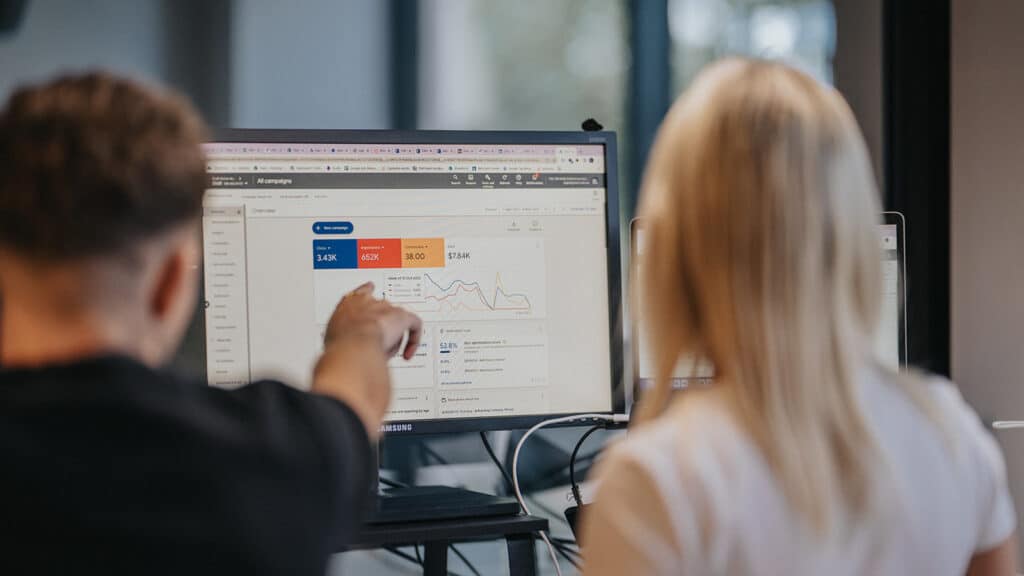When faced with difficult times, they say you should be grateful for small mercies. Well, if there’s one thing we can all be thankful for in the midst of a global pandemic, it’s the power of digital technology.
With the support of the Internet, we’ve been able to pull through COVID-19 and maintain a certain level of normality. It has kept us connected to family and friends while in isolation. It has enabled us to stay up to date with the latest information in our respective communities. And after being forced to shut down brick and mortar stores, it has provided many businesses with the ability to remain operational.
While we’ve begun to see restrictions lift across Australia, we won’t be able to bounce back to business as usual in the blink of an eye. Even as we start to venture out of our homes more and more, it will likely take some time for consumer sentiment to recover. As businesses reopen, foot traffic will start to rise, but many will still be cautious about mixing in public places.
Throughout the COVID-19 recovery phase, we need to be optimistic, yet vigilant. No one knows what’s going to happen over the coming months; we might see a second wave of cases, or we may find a vaccine that provides the answers to all of our problems. Either way, your business needs to be prepared for whatever may happen.
To ensure your business is armed and ready, it’s important to look at how user behaviours have changed. It all starts by reviewing the digital marketing landscape and identifying trends and opportunities that have come out of COVID-19. Once you know the lay of the land, you can take steps to strengthen your business for the future, no matter what that may look like.
Check out some of the top digital marketing trends of 2020 so far and discover how to use them to your advantage.
Demand for Interactive Content
Even if COVID-19 never spread beyond the borders of Wuhan, we would still be seeing growing demand for interactive content. As the digital world brings brands and customers closer than ever before, businesses need to consistently deliver high quality content to attract new prospects and foster ongoing loyalty.
You might be thinking this is nothing new, and you’re right. Marketers have been preaching ‘content is king’ for almost a quarter of a century. The difference now is that it’s no longer enough to distribute entertaining or informative content. Now, consumers want more. They want to engage in a content experience that requires their personal involvement. Rather than being passive receivers, they want to be active participants.
As a business, you need to be focussed on creating content that invites your audience to interact with your brand and your offering. Examples of interactive content include;
- Augmented Reality (AR)
- Virtual Reality (VR)
- Shoppable Social Media Posts
- Quizzes and Polls
- 360 Degree Videos
Our modern world was already heavily leaning toward interactive content. COVID-19 has simply increased the need for it. With reduced enthusiasm or a complete inability to shop in-store (depending on location), customers need to be provided with alternative solutions through digital channels.
Instead of walking through a furniture store, customers can use AR to help them decide which couch will work best in their living room. While they may not be able to see mannequins and window displays in fashion boutiques, they can get similar inspiration from shoppable posts.
It’s predicted that by 2022 around 70% of businesses will be experimenting with AR and VR, while 25% will have already put the technology into action (Social Media Today). Right now, you get to decide whether your business will be an early adopter, or part of the late majority.
Changes in Search Behaviour
It’s no surprise to see people turning to search engines more and more during these uncertain times. Over the past few months, we’ve seen a surge in COVID-19 related search queries which has in turn led businesses to provide more topically relevant website content.
While search engine usage has increased, it has typically been driven by a need to source news and information. With more time to spare during lockdown, users have naturally been spending more hours online, however, this time is generally being used for browsing, as opposed to submitting enquiries or performing transactions.
Of course, this is entirely dependent on the given industry, with some businesses seeing a rise in demand, and others experiencing a decline in activity. The following industries have reported an increase in search ad conversion rates.
- Non-Profits & Charities – up 20%
- Pharmaceuticals – up 47%
- Medical Supplies – up 24%
- Office Supplies – up 90%
- Packing & Shipping Supplies – up 107%
- Financial accountants – up 23%
- Skincare – up 21%
- Spa Care – up 41%
- On Demand Media – up 102%
On the other hand, the following areas have experienced a significant drop in search ad conversion rates as a direct result of restrictions making it difficult for business to continue.
- Travel and tourism
- Bars and restaurants
- Live entertainment
- Sports and fitness
- Building and construction
- Industrial and manufacturing
(WordStream).
Depending on your industry, paid search may or may not be a digital marketing channel worth exploring right now. As SEO is a longer term, ongoing strategy, you should be looking to maintain consistency and continue your efforts, while making the most of trending search terms.
Social Media Trends
Once again, as you would expect, social media usage has experienced a spike in recent months.
As it is primarily driven by interactions between family and friends, Facebook has seen most demographics up their usage by around 30%, with the boomer generation only increasing their time online by 15% (Brainlabs).
Being among the first few countries to be hit hard by the virus, Italy became an indicator of how other Western countries may respond and behave over the course of quarantine. Using Italy as a sample group, Facebook reported a 70% increase in usage across all of its apps since the onset of the pandemic (Facebook).
While general usage is trending upward, Facebook has actually seen a 13.5% drop in engagement. Similarly, Instagram has seen a 14% decline in engagement, with 34% of consumers shifting their attention to Twitter instead (Influencer Marketing Hub).
When you consider that Instagram is predominantly used to distribute aspirational content, while Twitter is more of a news and opinion platform, the change in behaviour is fitting for the current state of the world.
Organic Social Presence
For many businesses, the act of maintaining a consistent social media presence is a challenge even under normal circumstances. With the need to focus on adapting to COVID-19, it’s only reasonable to expect that some businesses are choosing to neglect their social presence.
In fact, 74% of brands have reported they are posting less on social media channels since the pandemic began. The paradox is that 75% of users are wanting (and expecting) brands to keep them informed during this time, and social media is one of the easiest ways for businesses to do that (Influencer Marketing Hub).
Engagement may have taken a hit, but usage is up, which means that while people may not be actively responding to social media as much as before, they are still paying attention. They are quietly scrolling and browsing more than they have in the past, and with many brands posting less content, there is an opportunity for your business to cut through the clutter and make an impact.
If you can connect with social media users during the recovery phase, they will be far more likely to turn to your brand in the future when sentiment improves. Now is the perfect time to ramp up your organic social media presence to start engaging and communicating with your existing and prospective customers.
Email Marketing Opportunities
Users have also demonstrated a shift in behaviour when it comes to email marketing. Similar to social media, email provides a platform for distributing content, communications and other information to your customers, with the aim of strengthening your relationship with them.
Just as users are viewing more content on social media, they are also tending to be more active on email. Throughout the isolation period, retail email open rates increased by 25% week-on-week, with daily open rates generally increasing by 5-10% per week (Influencer Marketing Hub).
Your customers may not be ready to take action just yet, but until restrictions fully lift and normal life resumes, they are in a sense a captive audience. Make the most of their undivided attention while you still can. By being strategic with your email marketing content now, your business will be rewarded in the future. It’s all about delivering the right content at the right time to build loyalty and brand equity.
If you’re wondering what’s the ‘right’ content for your audience, put yourself in their shoes and consider what they’re likely to be thinking and feeling. What do they need right now? How can you support them? Leading market research company Kantar recently surveyed 35,000 consumers across the globe and identified that 78% of people think brands should be helping them in their daily lives. Until COVID-19 is history, people want to consume content that is going to give them the assistance they need in the immediate future.
What Will You Do Next?
Now that you know how COVID-19 has impacted user behaviour, it’s up to you to decide how you will respond with your digital marketing activities. Not every possible opportunity will be suitable for your business to pursue. It’s all about identifying where to put your efforts in order to achieve optimal results. If you’d like some help in trying to figure out the best way forward for your business.





